#roman legions
Text

How Hadrian’s Wall is Revealing a Hidden Side of Roman History
A party invitation. A broken flipflop. A wig. Letters of complaint about road conditions, and an urgent request for more beer.
It sounds like the aftermath of a successful spring break, but these items are nearly 2,000 years old.
They’re just some of the finds from Hadrian’s Wall – the 73-mile stone wall built as the northwestern boundary of the Roman Empire, sealing off Britannia (modern-day England and Wales) from Caledonia (essentially today’s Scotland).
While most of us think of Pompeii and Herculaneum if we’re thinking of everyday objects preserved from ancient Rome, this outpost in the wild north of the empire is home to some of the most extraordinary finds.
“It’s a very dramatic stamp on the countryside – there’s nothing more redolent of saying you’re entering the Roman empire than seeing that structure,” says Richard Abdy, lead curator of the British Museum’s current exhibition, Legion, which spotlights the everyday life of Roman soldiers, showcasing many finds from Hadrian’s Wall in the process. A tenth of the Roman army was based in Britain, and that makes the wall a great source of military material, he says.
But it’s not all about the soldiers, as excavations are showing.
A multicultural melting pot
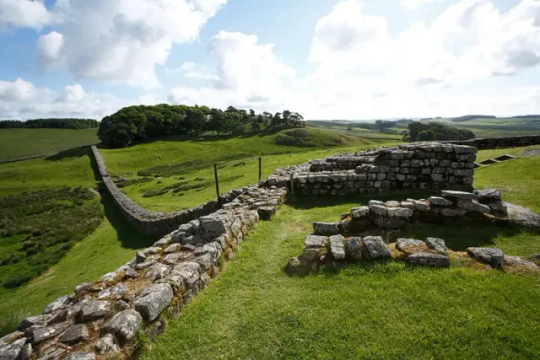
Hadrian, who ordered the wall to be built in 122CE after a visit to Britannia, had a different vision of empire than his predecessors, says Frances McIntosh, curator for English Heritage’s 34 sites along Hadrian’s Wall.
“All the emperors before him were about expanding the empire, but Hadrian was known as the consolidator,” she says. He relinquished some of the territory acquired by his predecessor Trajan, and “decided to set the borders” – literally, in some cases, with wooden poles at sites in Germany, or with stone in Britannia. Where those poles rotted thousands of years ago, the wall is still standing: “A great visual reminder” of the Roman empire, says McIntosh.
It’s not just a wall. There’s a castle every mile along, and turrets at every third-of-a-mile point, with ditches and banks both north and south. “You can imagine the kind of impact that would have had, not just on the landscape but on the people living in the area,” says McIntosh.
And thanks to the finds from the wall, we know a surprising amount about those people.
Although historians have long thought of army outposts as remote, male-dominant places, the excavations along the wall show that’s not the case. Not only were soldiers accompanied by their families, but civilians would settle around the settlements to do business. “ You can almost see Housesteads as a garrison town,” says McIntosh. “There were places you could go for a drink and so on.”
The Roman rule of thumb was not to post soldiers in the place they came from, because of the risk of rebellion. That meant Hadrian’s Wall was a cultural melting point, with cohorts from modern-day Netherlands, Spain, Romania, Algeria, Iraq, Syria – and more. “It was possibly more multicultural because it was a focus point,” says McIntosh, who says that the surrounding community might have included traders from across the empire.
Soldiers were split into two groups. Legionaries were Roman citizens from Italy, who had more rights than other soldiers and imported olive oil, wine and garum (a sauce made from decomposing fish).
They worked alongside auxiliaries – soldiers from conquered provinces, who had fewer rights, but could usually acquire citizenship after 25 years of service.
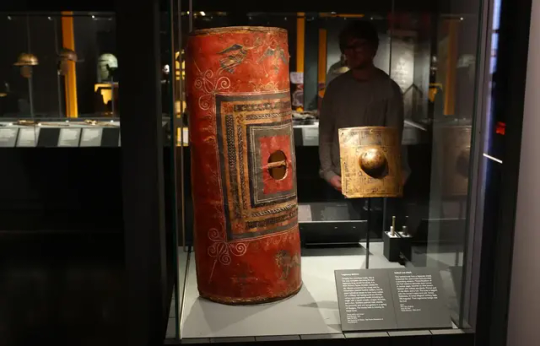
Soldiers carved their names and regiments on stones to show which part of the wall they built – around 50 of them are on display at Chesters fort.
But the wall shows that women and children were equally present.
McIntosh says that pottery brought to the camps – from the Low Countries and North Africa – shows that the soldiers “brought their families, who cooked in traditional style.” Archaeologists have found what seems to be an ancient tagine for North African-style cooking.
A tombstone from Arbeia fort for a woman named Regina shows she was a freed slave from southern Britain who was bought by – and married to – a Syrian soldier.
Another woman buried at Birdoswald fort was laid to rest with chainmail that appears to be from modern-day Poland. “Perhaps she married someone in the army,” says McIntosh, who calls the wall a “melting pot of people from all over the world under the banner of the army.”
“They brought their own religions, as well as worshipping Roman gods and adopting local deities,” she adds. At Carrawburgh, a temple to Mithras – an originally Persian deity – sat near a spring with a shrine to a local water spirit.
‘Wretched little Brits’

Some of the most extraordinary finds from the Roman empire are coming from one site on Hadrian’s Wall: Vindolanda. Here, archaeologists have found a wealth of organic remains because of what curator Barbara Birley calls the “unusual conditions onsite.”
At Vindolanda there are the remains of at least nine forts over 14 levels. “When the Romans would leave, they would knock down timber forts, and cover the area with turf and clay, sealing the layers underneath,” she says.
“Because it happened so many times, the bottom five or six layers are sealed in anaerobic conditions, so things don’t decay. When we get down there, we get wooden objects, textiles, anything organic.”
Vindolanda has the largest collection of Roman textiles from a single site in western Europe, as well as the largest leather collection of any site in the Roman empire – including 5,000 shoes, and even a broken leather flip-flop. “We probably had a population of 3,000 to 6,000 depending on the period, so 5,000 is a lot,” says Birley. For Abdy, the shoes evoke the conditions of the wet borderlands. “Women’s and children’s shoes are hobnailed – you needed it in the mucky frontier dirt tracks. They’re very evocative.”
There’s even a wig made from a local plant, hair moss, which is said to repel midges – the scourge of Scotland during the summer. A centurion’s helmet is also crested with hairmoss – the ancient equivalent of spraying yourself with insect repellent.
The first woman to write in Latin

One of the most famous finds is the trove of wooden writing tablets – the largest found anywhere.
“They give a snapshot of what life was actually like,” says Birley. “We understand so much more from written correspondence than from ‘stuff,’ and, archaeologically, it’s the stuff that usually survives – things like metals and ceramics.
“These were written in ink, not on a wax stylus tablet, and we believe they were used for what we’d put in emails: ‘The roads are awful,’ ‘The soldiers need more beer.’ Everyday business.”
The tablets – or “personal letters” as Birley describes them – were found on the site of a bonfire when the ninth cohort of Batavians (in the modern-day Netherlands) were told to move on.
“They had a huge bonfire and lots of letters were chucked in the fire. Some have been singed – we think it may have rained,” she says. One of them calls the locals “Britunculi” – “wretched little Brits.” Another talks about an outbreak of pinkeye. One claims that the roads are too bad to send wagons; another laments that the soldiers have run out of beer.

Among the 1,700 letters are 20 that mention a woman called Sulpicia Lepidina. She was the wife of the commander of the garrison, and seems to have played a crucial role. There’s a letter to her from another woman, Paterna, agreeing to send her two medicines, one a fever cure.
Birley says it’s similar to today. “If you’re a group of moms, still today we say, ‘Do you have the Calpol?’ It’s very human.” For Abdy, it’s a sign that women were traders. “She’s clearly flogging her medicines,” he says. “It’s really great stuff.”
Another tablet is an invite from Claudia Severa, the wife of another commander at a nearby camp. It’s an invitation to a birthday party. Under the formal invitation, presumably written by a scribe, is a scrawl in another hand: “I shall expect you, sister. Farewell, sister, my dearest soul.”
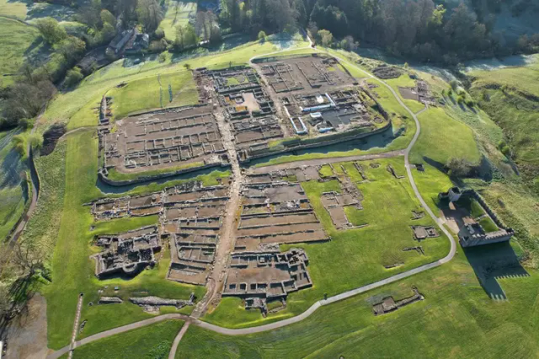
Presumably written by Claudia herself, it is thought to be the earliest example of a woman’s handwriting in Latin.
Without the organic finds – the shoes and the letters that indisputably belonged to women, unlike jewellery or weaving equipment – it’s difficult to prove conclusively that women lived in significant numbers. Vindolanda “illustrate the missing gaps,” says Abdy.
For Birley, they prove that women were as crucial a part of army communities as men. “Before the Lepidina tablets were found we didn’t really understand the interactions between the soldiers and their wives,” she says. Another tablet is written by what is thought to be a Spanish standard-bearer’s common-law wife, ordering military equipment for her partner.
“The Vindolanda collection is showing that there weren’t just camp followers and prostitutes; women were part of everyday life, and contributing to the military community in many ways,” says Birley.
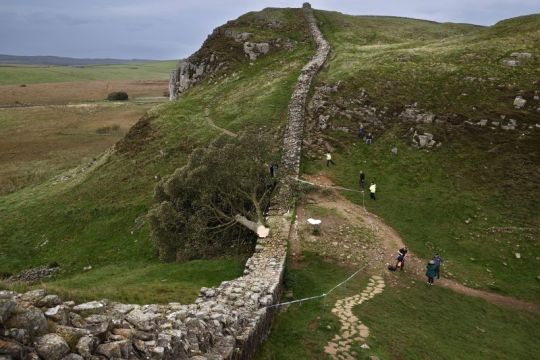

Abdy says that Hadrian’s Wall is interesting because the resident women span “all classes of society,” from Regina – the dead freedwoman, who would have been “bottom of the heap” – to the trader Paterna and the noblewoman Lepidina.
And of course, there’s the wall itself.
“In the Netherlands and Germany the finds are often stunning and better preserved – you go to museums and are bowled over. But in terms of structural remains, Hadrian’s Wall must be among the best,” says McIntosh, modestly, of her site.
Abdy agrees: “I can’t think of many symbols so redolent of imperial will than that wall.”
By Julia Buckley.
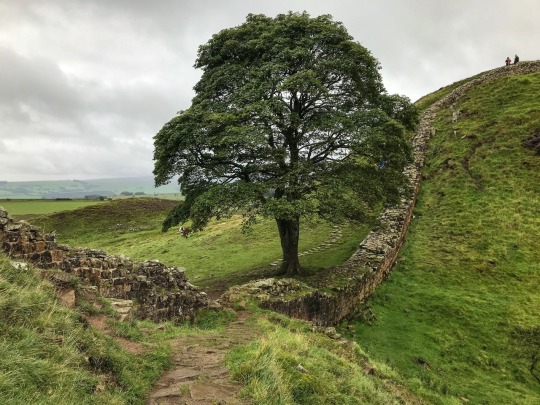
#How Hadrian’s Wall is Revealing a Hidden Side of Roman History#Hadrian’s Wall#emperor hadrian#northwestern boundary of the Roman Empire#Britannia#Caledonia#roman legions#ancient artifacts#archeology#archeolgst#history#history news#ancient history#ancient culture#ancient civilizations#roman history#roman empire#long post#long reads
106 notes
·
View notes
Text



The Hypocausts of York's Military Bathhouse, York Roman Baths Museum, York
#Roman#romans#roman baths#roman empire#roman legions#Roman Bathhouse#York#Yorkshire#archaeology#Hypocaust#ancient buildings#ancient cultures#ancient design#architecture#roman britain#roman culture
42 notes
·
View notes
Text

This Roman military diploma was dredged from a river in Croatia in 1997 and dates to 71AD. Such documents were issued to retiring soldiers upon completion of their minimum required service and were highly prized. Amazingly, it still contains the wax seals of those who witnessed the document.
24 notes
·
View notes
Video
BATALLA-TEUTOBURGO-ARTE-PINTURA-GERMANIA-SIGNIFER-LEGIONARIO ROMANO-MUERTE-BOSQUE-PINTOR-ERNEST DESCALS por Ernest Descals
Por Flickr:
BATALLA-TEUTOBURGO-ARTE-PINTURA-GERMANIA-SIGNIFER-LEGIONARIO ROMANO-MUERTE-BOSQUE-PINTOR-ERNEST DESCALS- El LEGIONARIO ROMANO herido de muerte en las entrañas del Bosque de TEUTOBURGO en el interior de GERMANIA, el SIGNIFER con el Signum de su Legión Romana en la mano, símbolos del poder Imperial romano que caen al suelo boscoso junto a su portador, Rama ha sido derrotada de forma concluyente, las Tres Legiones Romanas de Varo desaparecen para siempre en territorios lejanos, todos sus hombres Legionarios perecen y sólo queda un amargo recuerdo que demandará su venganza, Arminio los ha vencido sin paliativos. Pintura del artista pintor Ernest Descals sobre papel de 50 x 70 centímetros, pintar sobre los hechos de la historia de Roma y del Imperio Romano a través de las expresiones y emociones de sus personajes.
#BATALLA#TEUTOBURGO#TEOTEBURG#BATTLE#GERMANIA#ROMA#ROME#IMPERIO ROMANO#LEGIONES ROMANAS#LEGIONARIO ROMANO#LEGIONARIOS ROMANOS#ROMAN EMPIRE#ROMAN LEGIONARY#ROMAN LEGIONS#SIGNIFER#SIGNUMPODER IMPERIAL#SIMBOLOS#SYMBOLS#HISTORIA#HISTORY#ARMINIUS#ARMINIO#VARUS#VARO#ANIQUILACION#MUERTE#DEATH#TRES LEGIONES#THREE LEGIONS#ART
2 notes
·
View notes
Text
TIL that the Third Augustan Legion had a poetry club. And their poems were about what you'd expect...
Killing people? CHECK
Winning glory? CHECK
Getting loot? CHECK
Naked women? CHECK
#roman legions#at least there were no dicks?#i mean you KNOW there were dicks#oh sweet Lord were there ever dicks
7 notes
·
View notes
Text
#podcasts#mike duncan#the history of rome podcast#the history of rome#roman legions#infantry tactics#legions#legio#book#storm before the storm#rome#roman#spqr
3 notes
·
View notes
Text
Legionary Camps in Pannonia
Four large legionary camps were tasked with guarding the river of Danube along its Pannonian segment. Camps were at places which were settled by barbarians even before the arrival of Romans. Once Romans arrived, Danube became the key frontier for defense of the Empire against barbarians, and once it collapsed the Western Empire was conquered by peoples crossing the Danube.
Military camps also…

View On WordPress
0 notes
Text
Legionary Camps in Pannonia
Four large legionary camps were tasked with guarding the river of Danube along its Pannonian segment. Camps were at places which were settled by barbarians even before the arrival of Romans. Once Romans arrived, Danube became the key frontier for defense of the Empire against barbarians, and once it collapsed the Western Empire was conquered by peoples crossing the Danube.
Military camps also…

View On WordPress
0 notes
Text

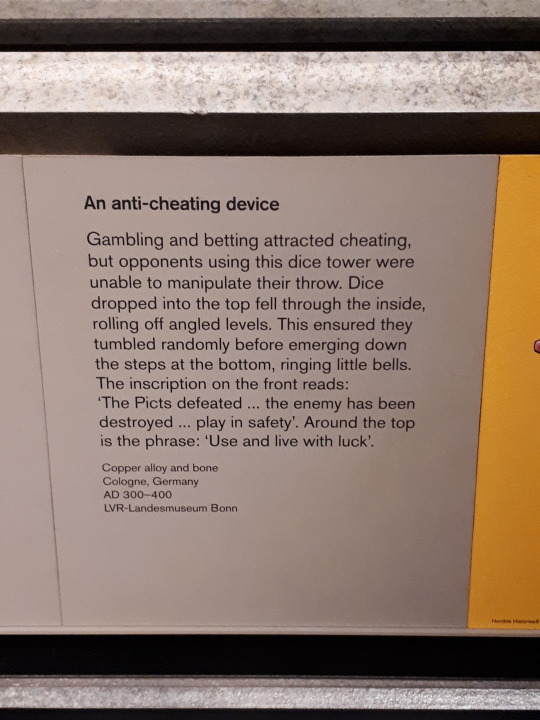
BEST THING IN THE EXHIBIT
14K notes
·
View notes
Text
got a book about a 1940s detective getting portal fantasied, which is objectively better than a normal guy (gender neutral) from the writer's period getting portal fantasied
#i was going to say 'bringing my collection of non-modern portal fantasies to 2'#but actually it's 3: this; the high crusade (13th century english people get kidnapped by aliens#and it's really good);#and the lost legion (roman legion gets portal fantasied. less interesting than i'd hoped.)
5K notes
·
View notes
Text
Ancient Rome Recreated
#ai#ai generated#Ancient Rome Recreated#art#artist#art work#art world#art news#ancient artifacts#archeology#archeolgst#history#history news#ancient history#ancient culture#ancient civilizations#ancient rome#roman history#roman empire#roman emperors#roman legions#roman art#ancient art
53 notes
·
View notes
Text

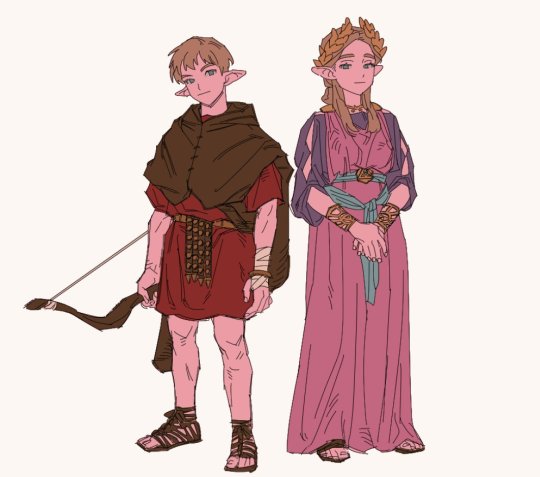
Zelda Roman Empire AU by rivaeri
#rivarie#legend of zelda#roman legion#roman empire#lorica segmentata#plate armor#gladius#shield#tower shield#noble#archer#robe#laurel wreath#cloak#link#zelda
629 notes
·
View notes
Text
so we all agree that kirkwall is both horrifying and fascinating and i wish they'd delved more into its bloody history beyond the snippets we get from the codexes of the band of three. like hello?? three seekers of truth - among which a dalish mage - scurrying about the sewers and lower passages of the city, discovering that kirkwall was designed as some sort of magical symbol, has grooves in the sewers allowing the flood of blood downward for blood magic purposes, and last but not least realizing that its circle of magi had a much higher number of failed harrowings & episodes of blood magic hysteria than basically any other circle in existence??? you cant leave me hanging like that. why was the veil so thin there even before tevinter came? why were they weakening it further?? what was tevinter doing with all those disappeared slaves every year and the huge blood magic ritual involving thousands of slaves and the city itself being a magic symbol??? did the band ever find out if the Forbidden Ones are the same Forgotten Ones of dalish lore??? why was xebenkeck called 'forgotten one'??? hello????? what the fuck is up in kirkwall??????
#i think i need another game set in kirkwall but this time done RIGHT#ALSO what's up with the legions tevinter sent to kirkwall that completely vanished???#i understand that it's likely a reference to the ninth roman legion that disappeared into thin air#since tevinter is modeled after the roman empire etc etc#but i also want to know WHERE THEY WENT#WHERE'D THEY END UP BIOWARE#why is kirkwall so damn dangerous in the first place#p#kirkwall#dragon age#dragon age 2#tevinter#the band of three#dragon age meta
2K notes
·
View notes
Video
PINTAR-ARTE-PINTURA-BATALLA-BOSQUE TEUTOBURGO-GERMANIA-LEGIONARIOS ROMANOS-COMBATE-GLADIUS-FOTOS-ESTUDIO-PINTOR-ERNEST DESCALS por Ernest Descals
Por Flickr:
PINTAR-ARTE-PINTURA-BATALLA-BOSQUE TEUTOBURGO-GERMANIA-LEGIONARIOS ROMANOS-COMBATE-GLADIUS-FOTOS-ESTUDIO-PINTOR-ERNEST DESCALS- Pintar las escenas de los combates en la Batalla del Bosque de TEUTOBURGO en GERMANIA, el LEGIONARIO ROMANO luchando con su espada GLADIUS para salvar su vida ente los feroces ataques de los germanos de Arminio. Fotos del artista pintor Ernest Descals pintando en su estudio artístico la debacle de las tres Legiones Romanas perdidas. Momentos de la historia del Imperio Romano, pintura sobre papel de 50 x 70 centímetros en la que la acción se muestra con expresión plástica. Colección de Arte sobre Teutoburgo y el ejército aniquilado del Legado Varus.
#LEGIONARIO ROMANO#LEGIONES ROMANAS#VARO#VARUS#ARMINIO#ARMINIUS#EXPRESION PLASTICA#TEUTOBURGO#COLECCION#TEUTOBURG#BATALLA#COMBATE#ESPADA ROMANA#GLADIUS#GERMANIA#GERMANOS#ROMAN EMPIRE#EJERCITO ROMANO#HISTORIA#HISTORY#BOSQUE#FOREST#ROMAN LEGIONARY#ROMAN ARMY#ROMAN LEGIONS#ACCION#ACTION#BATTLE#ROMAN SWORD#EXPRESIONISMO
0 notes
Text
Uhhh back to shitpost.
I wanted to post art of either Caesar or Arcade today, but I've been working on my cosplay which sucked out all my energy Σ(-△-|||)︴
Btw I get so happy whenever I see people interacting with me (´ ∀ ` *) I be looking at a cool person on my home page and the next thing I know, they're following me back⁉️ My happiness is unmeasurable ♡(。- ω -)

#fnv#fallout#art#vulpes inculta#artwork#fallout new vegas#vulpes#shitpost#doodle#caesar's legion#roman empire
215 notes
·
View notes
